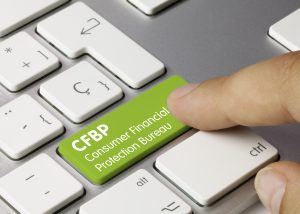 The Consumer Financial Protection Bureau (CFPB), created in 2010 as part of the Dodd-Frank Act, has invoked an unused portion of its legal power to examine nonbank financial companies that pose risks to consumers.
The Consumer Financial Protection Bureau (CFPB), created in 2010 as part of the Dodd-Frank Act, has invoked an unused portion of its legal power to examine nonbank financial companies that pose risks to consumers.
The CPFB believes that using this legal authority “will help protect consumers and level the playing field between banks and nonbank entities.”
“Given the rapid growth of consumer offerings by nonbanks, the CFPB is now utilizing a dormant authority to hold nonbanks to the same standards that banks are held to,” said CFPB Director Rohit Chopra. “This authority gives us critical agility to move as quickly as the market, allowing us to conduct examinations of financial companies posing risks to consumers and stop harm before it spreads.”
According to a press release, the CFPB has authority under the Dodd-Frank Act to use traditional law enforcement to stop companies from engaging in conduct that poses risks to consumers. While this typically involves adversarial litigation, the law also gives the bureau authority to conduct “supervisory examinations” to review the books and records of entities that fall under its purview.
The CFPB will then offer a report to the entities with the problems that need to be addressed so they can take corrective actions.
Nonbank supervision
Before Dodd-Frank, only credit unions and banks were subject to supervision; now that includes nonbanks, depository institutions with more than $10 billion in assets, and their service providers. Nonbanks do not have a bank, thrift, or credit union charter; many today operate nationally and brand themselves as “fintechs.”
Congress authorized several categories of entities subject to CFPB’s nonbank supervision program. First were all nonbank entities regardless of size: mortgage lenders, private student loans, and the payday loan industry. The second category were “larger participants” in the industries of consumer reporting, debt collection, student loan servicing, international remittances, and auto loan servicing.
The third category consists of any nonbank whose activities could cause pose risks to consumers and is not specific to any consumer finance product or service.
The CFPB did implement this provision in 2013, but has only now begun to invoke this authority. The purpose of invoking this rule is to be “agile” so the bureau can supervise entities that may be fast growing or are in markets outside the existing nonbank supervision program.
“Such risky conduct may involve, for example, potentially unfair, deceptive, or abusive acts or practices, or other acts or practices that potentially violate federal consumer financial law,” the press release said. “The CFPB may base such reasonable cause determinations on complaints collected by the CFPB, or on information from other sources, such as judicial opinions and administrative decisions. The CFPB may also learn of such risks through whistleblower complaints, state partners, federal partners, or news reports.”
In light of transparency, the CFPB has issued a new procedural rule to increase the transparency of the risk-determination process and is requesting public comment from interested parties. Click here to read the rule as published by the CFPB.

 DSNews The homepage of the servicing industry
DSNews The homepage of the servicing industry









